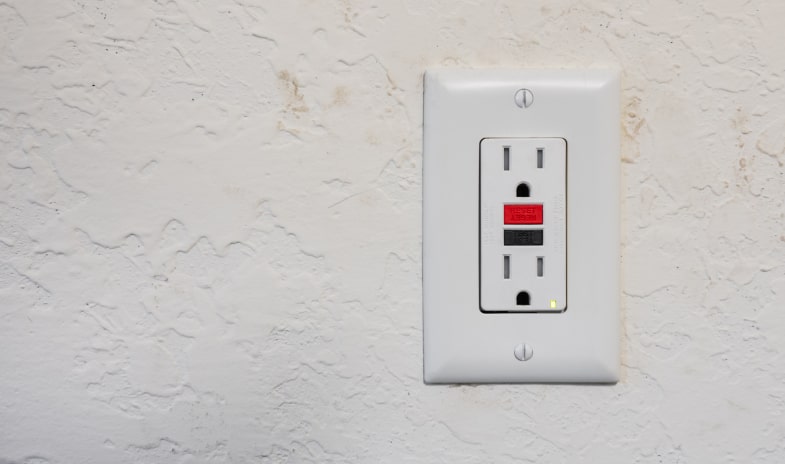A GFCI (ground fault circuit interrupter) is an important electrical safety device. What does a GFCI do? It protects people against electric shock, which in the most severe form – electrocution — is deadly.
That’s the short answer. For details as to what a GFCI does, why you need to install those outlets and when to use it, read on.
What Does A GFCI Do?
When your home electrical system is working properly, it “harnesses” electricity for safe use, via a system of insulated wires and circuits. However, sometimes a component of your system turns into an electrical hazard, due to excessive wear and tear, damage, or moisture. At such times, the power will surge rather than flow at its usual steady rate – which is a danger signal. A GFCI’s purpose is to detect this type of surge and immediately cut the flow of electricity.
If it is not stopped, the electricity will follow its natural tendency to travel along the shortest path to the ground, through any handy conductor, such as water – or the body of a human being! That’s why a GFCI installation can literally save lives.
When Should GFCI Be Used?
Other than avoiding outlet issues like it not working in a room, Calgarians, like all Canadians, must follow the Canadian Electrical Code. In new construction, this Code mandates GFCI installation whenever type of electrical outlet is located near a source of water, specifically:
- Indoors, 1.5 metres or less from a sink (in kitchens, bathrooms, laundry rooms, and so on)
- Outdoors, 2.5 metres or less above finished grade (for example, a driveway or pool deck). The swimming pool and hot tub wiring must be protected with GFCIs.
While GFCIs are not required in older houses at the present time, they are a highly recommended safety measure. In fact, we recommend GFCI installation throughout your home; this is a relatively inexpensive electrical upgrade that will provide an extra measure of protection for you and your family.
Installing GFCIs is one of those home electrical projects you shouldn’t try to do yourself. It is all too easy to make a mistake with electrical DIY fixes. Professional installation is important so that your new GFCIs will work correctly and safely.
How To Test A GFCI Outlet?
To ensure that your GFCI outlets are functioning correctly, test them once a month. The testing procedure is very quick and simple:
- Press the TEST button located in the middle of the outlet.
- Listen for a click. This indicates that the outlet has been tripped.
- Press the RESET button to restore power.
- Now plug a small appliance such as a lamp into the outlet, turn it on, and try the test again. If the lamp goes out, you know that the GFCI has successfully cut the power to the outlet. Unplug the lamp and press RESET once again. This will restore both electric power and GFCI protection.
Make sure to know how old your outlet is and when it needs replacing.
What Is The Difference Between A GFI And A GFCI?
Most people tend to use the terms GFI and GFCI interchangeably. Don’t be confused by this, however. There is a difference in meaning – strictly speaking, “GFI” refers to ground fault (interrupt) protection of an individual outlet, while “GFCI” safeguards a whole circuit, serving multiple outlets.
Don’t confuse the two with AFCIs (Arc Fault Circuit Interrupters), which help prevent electrical fires.
What Causes A GFCI To Trip?
Occasionally a GFCI may trip repeatedly, like when using your hot tub for example. This type of nuisance tripping tends to be caused by slight variations in the electrical current running through them. To avoid this problem, take the following preventive steps:
- Maintain all your power tools in good condition
- Use GFCIs only for circuits 100 feet long or less
- Do not connect a stationary motor to a GFCI
Trust Sun Electrical To Keep Your Home Safe
Keeping your home safe is Priority No. 1 for you and for Sun Electrical. Count on us for reliable, expert electrical upgrades and repairs.





